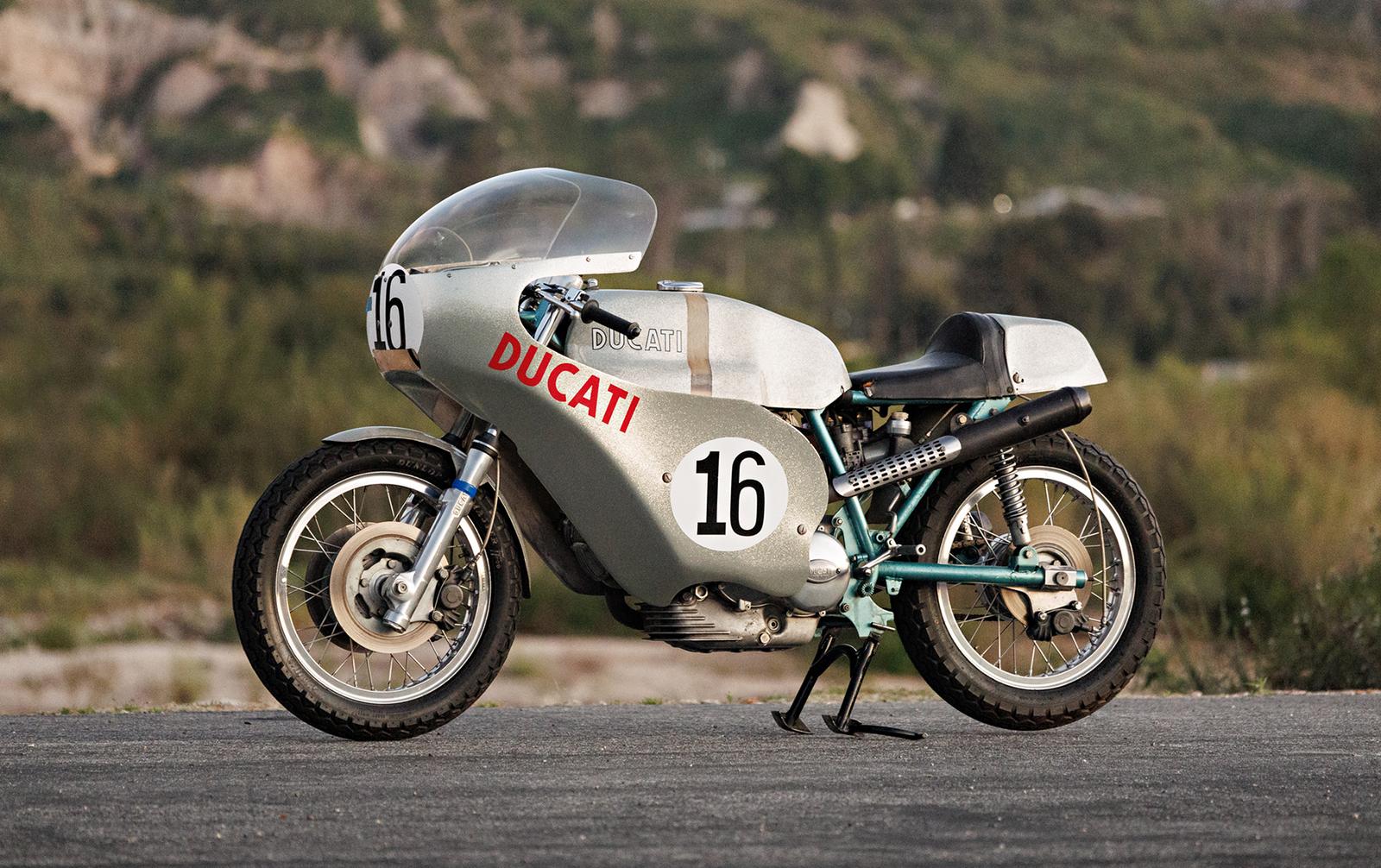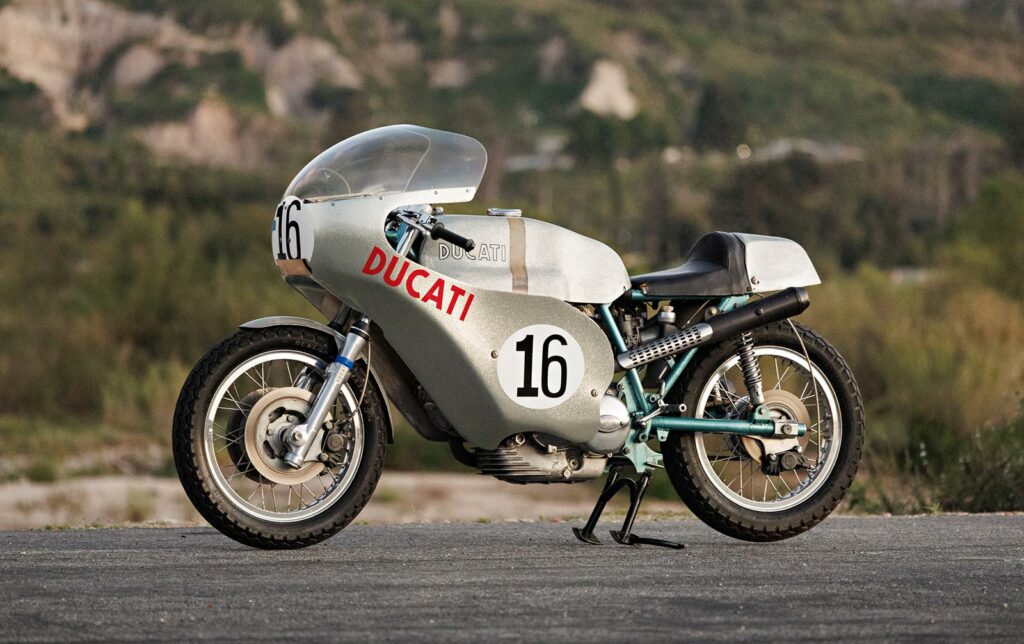
It was business as usual at yesterday’s 2024 Emilia Romagna F1 Grand Prix, as Max Verstappen took yet another win, but if you’d been at that same Imola circuit in Northern Italy 52 years earlier, you’d have witnessed one of the most important and thrilling events in automotive history. You see, for Ducati, the company history can neatly be divided into two periods, that before and after the Imola 200 of 1972. It has been described as a date and a result that was almost divinely inspired, and ‘meant to be’, but to state as much is a great disservice to the men and machine that made it happen. And before your very eyes is a near-perfect example of one of the eight motorcycles built by Ducati to win that famous race, a genuine 1972 Ducati 750 Imola Desmo.
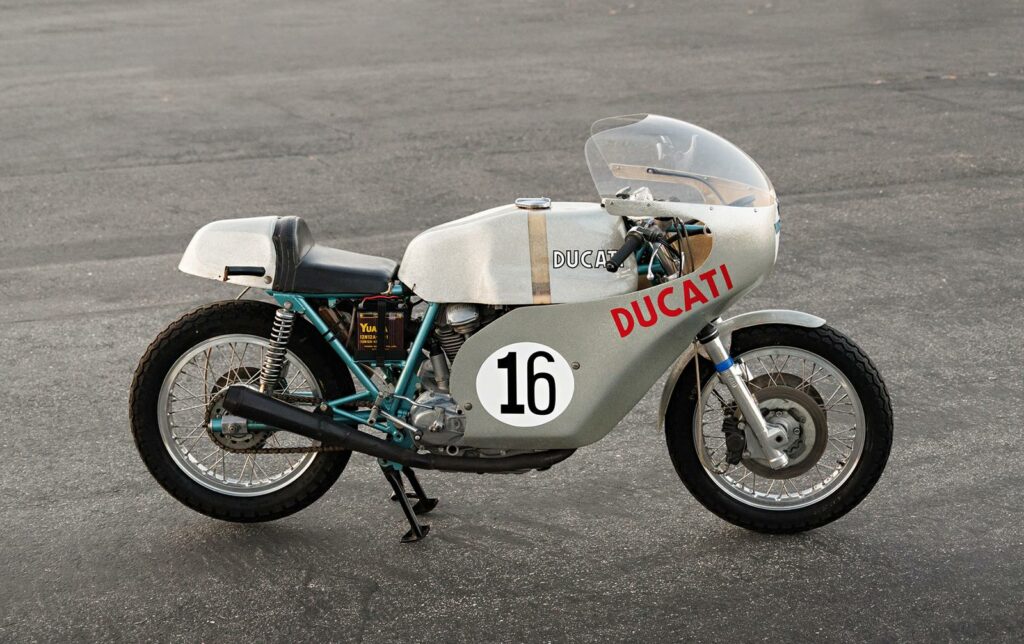
You wouldn’t know it today, with their absolute dominance of motorcycle road racing around the world, but there was a time when Ducati really only dabbled at the edges of the sport. The likes of Norton, MV Agusta and the Japanese manufacturers, they made the big boy bikes, Ducati had always found its success with smaller machines. But by 1970, management wanted to change the reputation of the company and they had just the man to make it happen. Legendary engineer Fabio Taglioni had been with the Italian outfit for years, but now tasked with taking on the world, a fire had been lit under the genius that simply could not be extinguished.
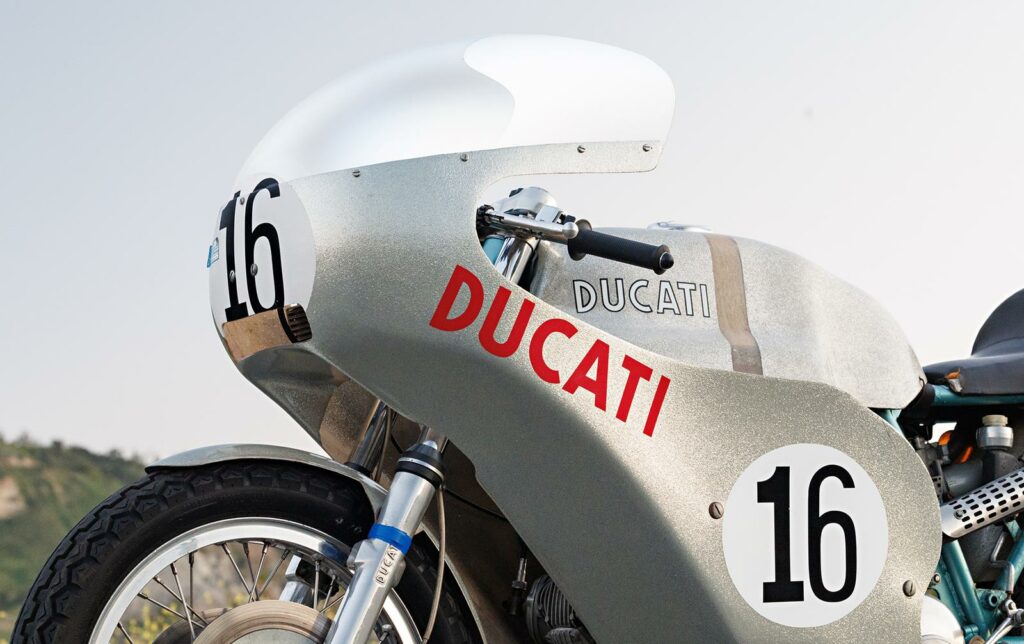
On 20 March 1970, he sat down at his desk and made the first sketches of his racing machine, which would use an all-new L-Twin engine. By April he’d finished the full drawings for the bike and by July, along with his team at the dedicated race shop, they had a running engine. A month later and a complete prototype motorcycle was finished and ready to test, unlike anything Ducati had built before. Can you imagine that today? With all of the red tape, interference of bean counters and upper management, the committees and OH&S.
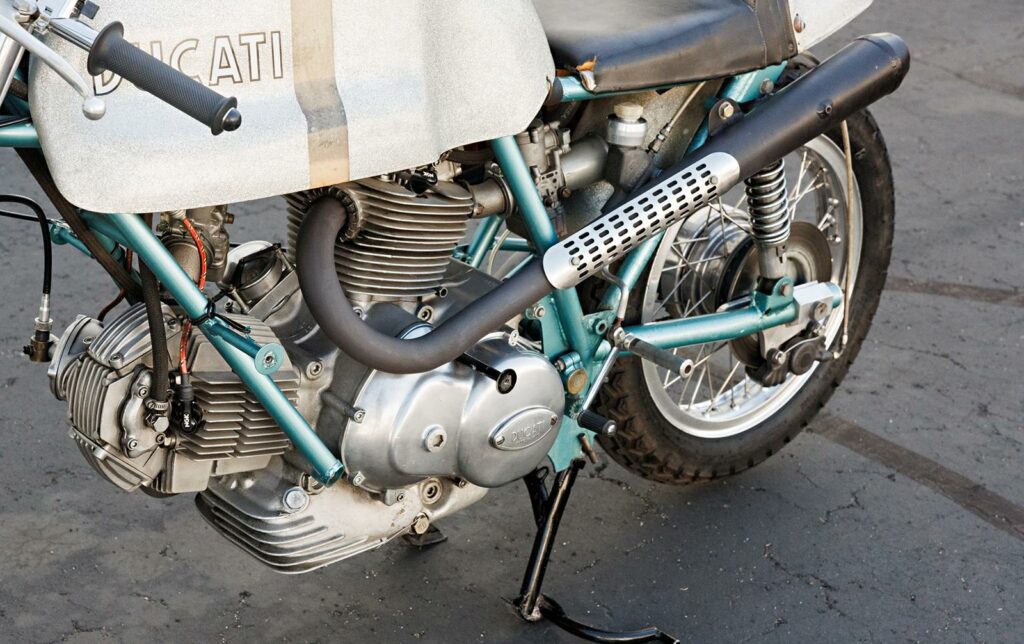
To refine the styling of the motorcycle, Leopoldo Tartarini, the founder of Italjet, was brought in by Taglioni, while he himself focussed on the purely mechanical components. But he wouldn’t have it all his own way. Director Arnaldo Milvio and General Manager Fredmano Spairani had supported the engineer from the beginning, but Spairani wanted famed British racer, retailer and designer Colin Seeley to build the frames, something Taglioni vehemently opposed. Thus an internal competition was born, cases were sent over to the UK for Seeley to base his frame around, and the Italian race shop would continue to develop their version independently.
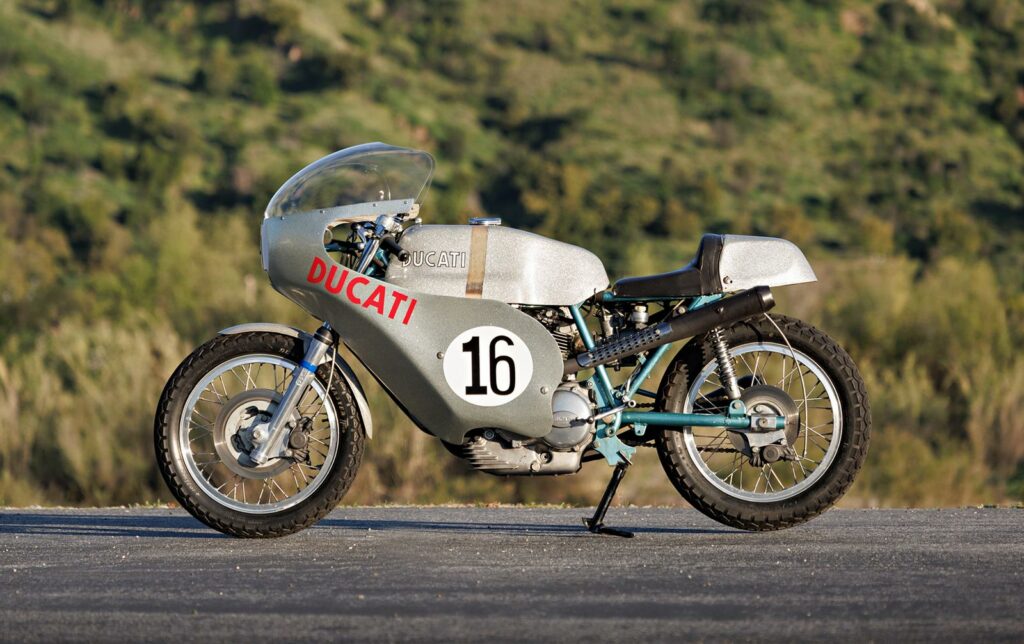
As all of this was taking place, it had been announced that the Imola circuit would host an all-new endurance race, dubbed “Europe’s Daytona” and with an inaugural race set for April 1972, there was now a clear end goal for this marvellous machine. The Imola 200 would not only bring together the best riders from the Grands Prix, European, American and Italian championships but also play host to the newly established Formula 750 class of racing. Nobody even considered Ducati a contender, but inside the factory, they knew that winning that race would change the fortunes of the brand forever.
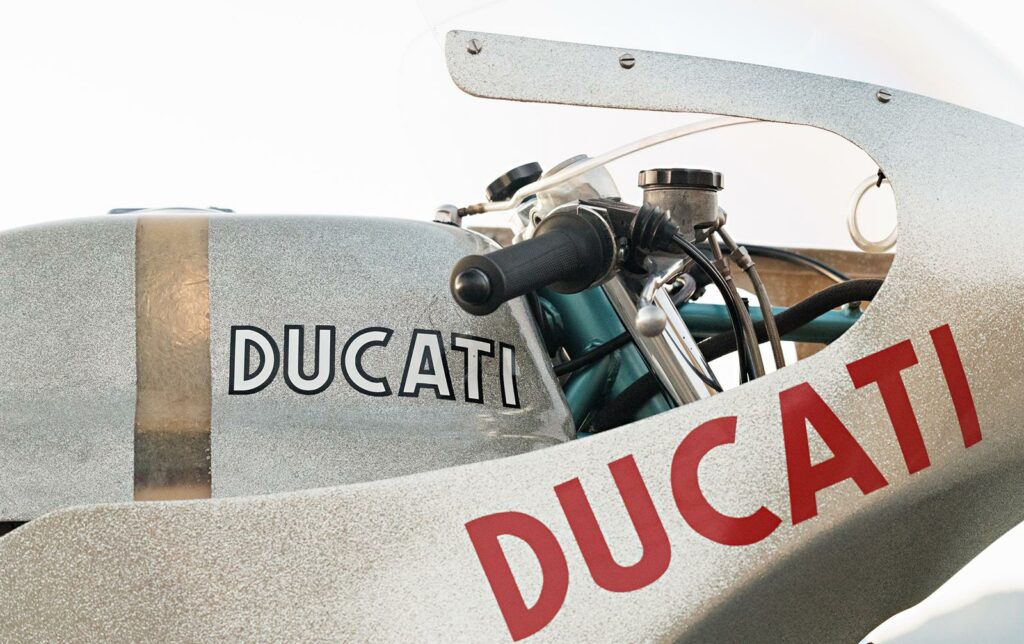
To aid in development, 500cc versions were built to compete in the 1971 Italian championship, and it was largely considered a data acquisition exercise, rather than a full-on attempt to win races. For the Italian round of the Grand Prix season, small bike superstar Phil Read was drafted in to ride the Ducati in a one-off appearance and his feedback was that the Seeley frame was better! For the next season, the factory riders would largely use the Britsh-developed frame. But as Imola approached, Taglioni had built an all-new frame, which used some of Seeley’s ideas and the bike was spot on.
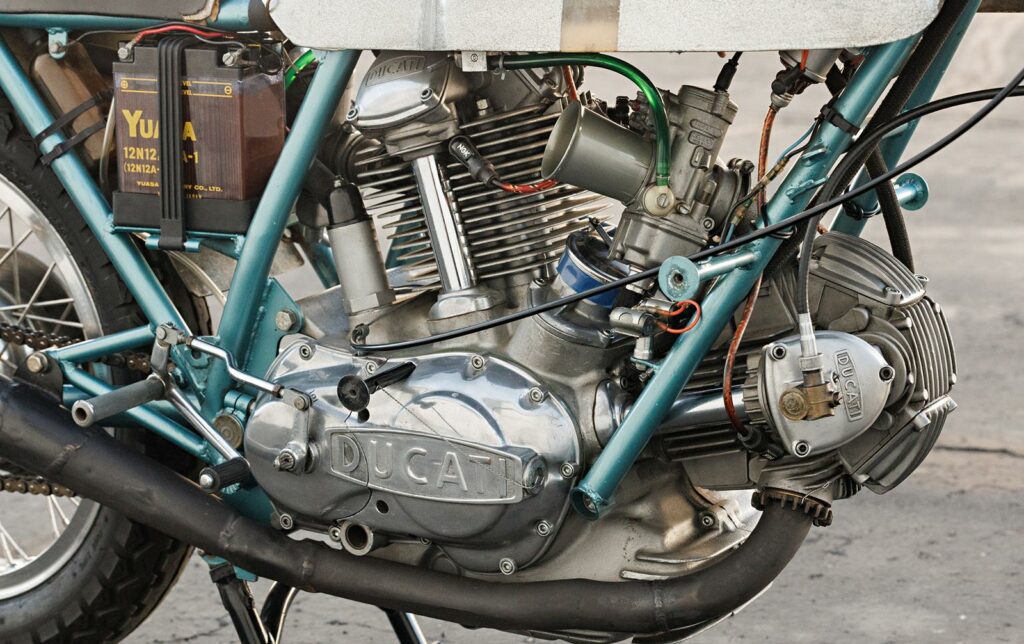
The engine too was a revelation, just as Taglioni had always envisioned, the L-Twin measured 748cc with a relatively short stroke. This allowed peak power to be reached at 9000rpm, meaning even limiting revs for reliability would allow for more than 85bhp. Most importantly, desmodromic timing would be deployed for the first time in a big-capacity race engine, a staple of the company still to this day. By the time the big race was drawing near, the exhaust was built for the anti-clockwise circuit, less scrapping around left-hand bends, and big 40mm Dell’Orto carbs employed.
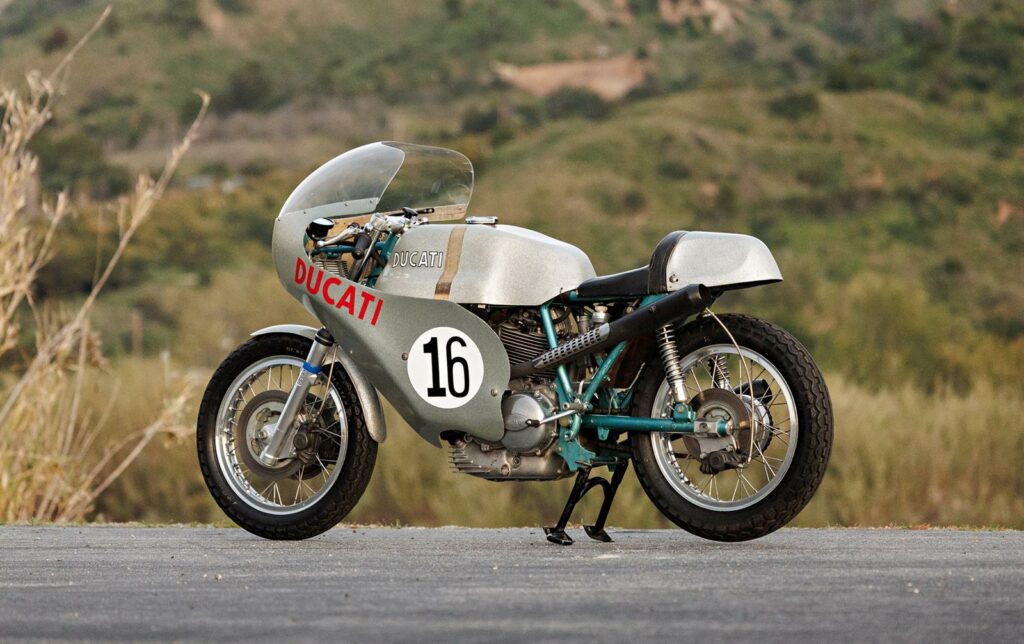
For the Imola effort riders Paul Smart, Bruno Spaggiari, Ermanno Giuliano, and Alan Dunscombe were employed and the eight motorcycles were finished in their famed silver metallic flake gelcoat. Oversized quick filler setups for refuelling and a transparent fuel level stripe were also added to speed up pitstops and remove the need for a fuel gauge. Ducati was ready, but nobody saw them coming! The winner would surely come from Agostini on his MV Agusta, Villa’s Triumph, Findlay on the trick Moto Guzzi, Yamaha, Norton, Triumph, Suzuki, or Kawasaki.
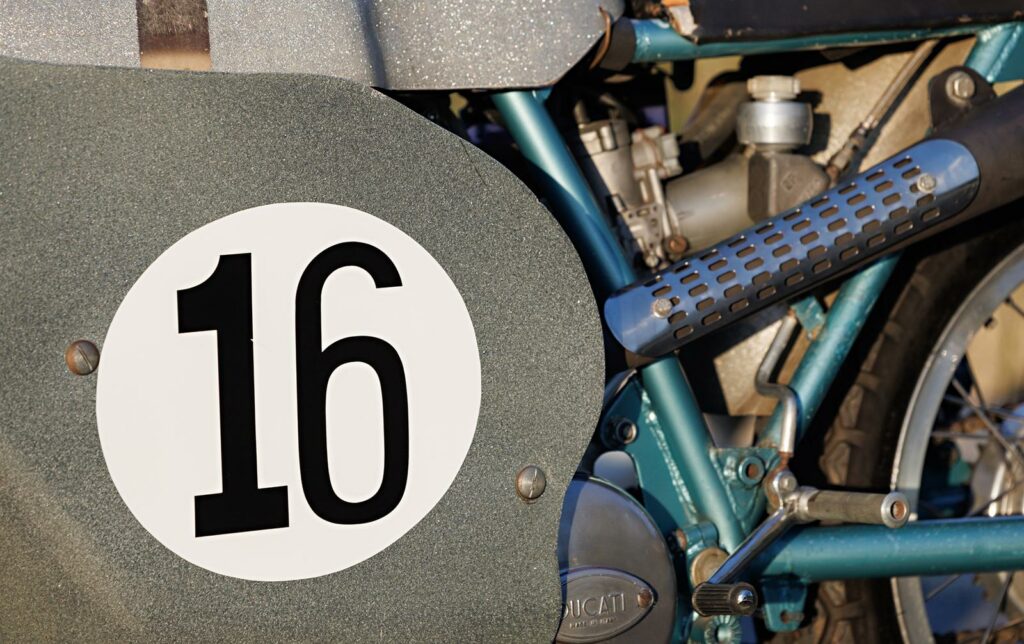
But smiling from ear to ear, Taglioni, in front of 70,000 bike-mad spectators, watched his two best riders Smart and Spaggiari battling for victory; a result only decided on the last lap when the latter began to run out of fuel. The Imola 200 had been won, the Desmo was born and Ducati had arrived forever more. World-renowned Ducati expert Ian Falloon examined this example and stated that the “condition and originality is of such a high standard that this is one of the finest known examples.” So, given that only eight were ever built, that it is of such importance in motorcycling history and remains in such original condition, it’s no wonder that this incredible machine is valued at an astonishing US$650,000 – US$750,000.
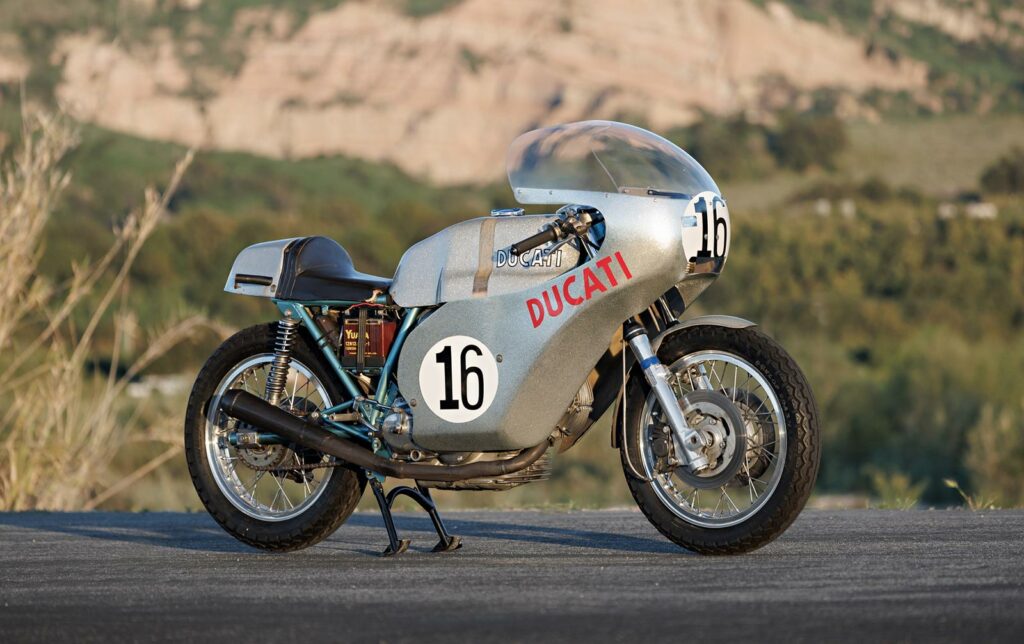
[ Gooding & Company ]
